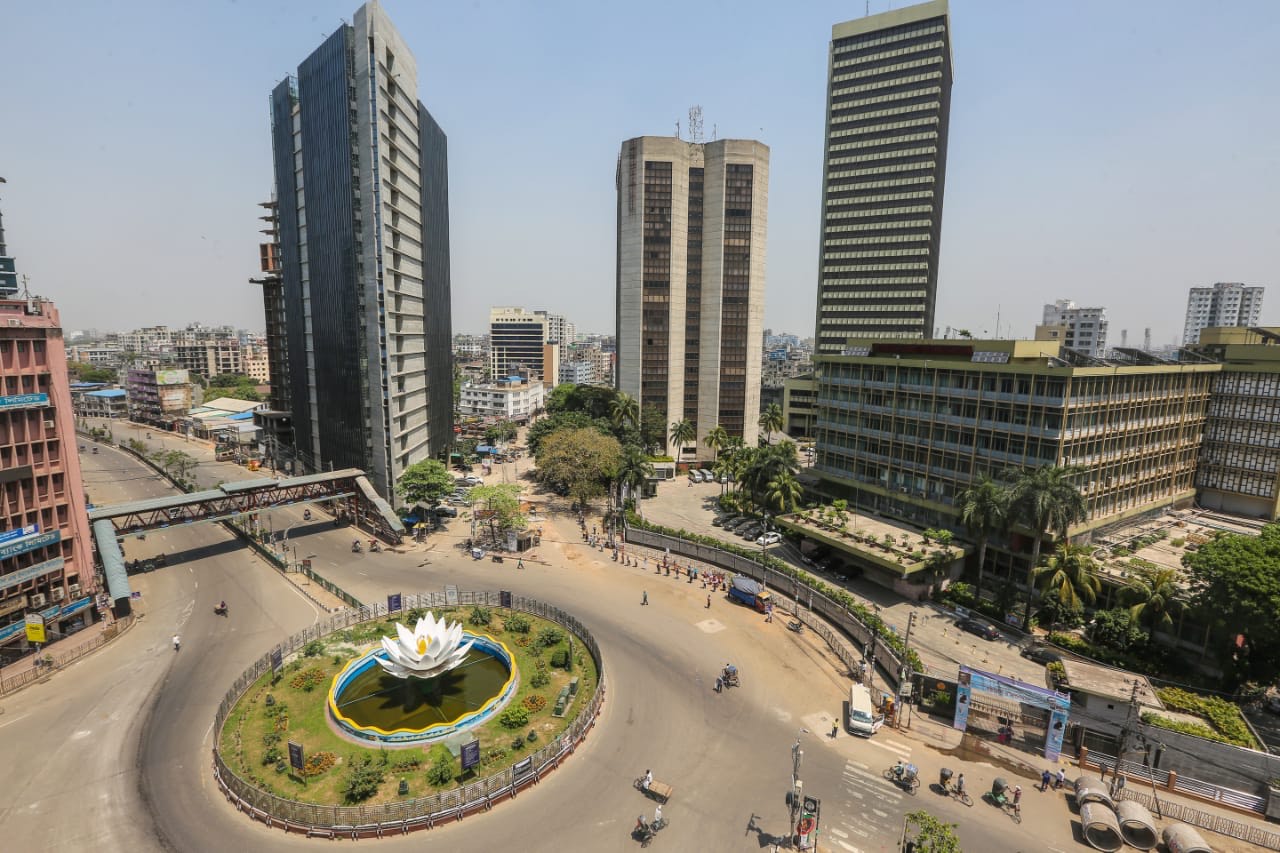


Stories

Dhaka city is an ever-expanding megacity. But the inhabitants of the city are suffering due to this unplanned expansion. Traffic has become the worst aspect of living in Dhaka city. With 18.10 lakh registered vehicles in Dhaka alone, and a population of 22.5 million, this is not surprising.
According to the Accident Research Institute, BUET, in 2018, Dhaka traffic wasted five million work hours and cost the economy Tk27,000 crore. This number has significantly grown in the last four years. According to research from BIDS and PRI, approximately 6 to 10% of the country’s GDP is indirectly lost to traffic consumption.
Continuous population increase
People from all over Bangladesh migrate to Dhaka in increasing numbers every year. According to the World Bank, approximately 400,000 to 500,000 people move to Dhaka annually.
People have always moved to the capital seeking a better life for themselves or their children, due to its higher economic opportunities. Bangladesh is also one of the worst victims of climate migration, hence the pressure of these migrants is felt the most in the main cities.
A concrete city with no space to breathe
Dhaka has grown much faster than the rest of the country, and as such, the infrastructure of the city had to be developed much faster, resulting in it having the most number of roads, flyovers, government and private sector offices, health and educational institutions, and more, in many cases, in an unplanned manner.
A city is supposed to have 25 % green space, but currently, Dhaka has less than 5%. The city is mostly concrete, with no space for children to play or adults to exercise or even breathe properly. Dhaka’s air quality is also a matter of concern and is potentially hazardous to health.
So, what can be done?
There has been a lot of debate on the proposed Detailed Area Plan (DAP), particularly on the restrictions being imposed. There are much better ways to make Dhaka more livable than some harsh regulatory embargoes in the proposed DAP.
We believe that it is high time the capital was decentralized, as it would solve many of the current issues. Currently, Dhaka is expanding geographically in all directions. In the east, the city is expanding towards Purbachal and Jalshiri while in the west, towards the extended sectors of Uttara. In the South, citizens are buying properties in Keraniganj, and the areas around Padma bridge. This has created an enormous opportunity to urbanize these areas in a planned manner.
The following can be a way to expand Dhaka without creating unnecessary bottlenecks:
Policy for planned expansion
There needs to be a national policy for urban expansion before the city expands. RAJUK, BRTA, City Corporation, DESCO, WASA, and TITAS all need to work together so that the new extensions of the city are planned out, for instance, to make sure the gas and water lines under the roads are correctly constructed. Also, different zones need to be allocated as residential and commercial areas to reduce congestion.
Investing in institutional infrastructure
Our experience suggests that the areas that have the best schools have the fastest urbanization. If the government creates public schools and colleges in the new areas and public hospitals, then more and more people will be willing to relocate to those areas.
Similarly, if the government can incentivize top private schools to construct branches in these new areas by providing them with subsidies, many people will be willing to move.

Similarly, incentives should be given to the private sector to build hospitals and shopping complexes. Furthermore, they should ensure accessibility to those areas through proper public transportation and good roads.
Offering home loans at lower interest rates
Banks and other financial institutions should be encouraged to offer loans at reduced interest rates. This would ideally include both home loans for potential homeowners in these areas, as well as business loans for real estate developers for projects.
Offering incentives to real estate companies
Incentives could be offered to real estate developers to build residential complexes and commercial projects. If real estate developers are given land at reduced prices, offered opportunities to go into joint ventures with the government, and tax holidays for building in these areas, I believe they would be more than willing to build in these areas.
Decreasing apartment registration costs
The government can reduce registration costs for apartments in these areas to ensure development. Moreover, there can be a slab registration fee depending on the size of the apartment where the larger the size of the apartment, the higher the percentage of the registration fee.
Encouraging offices to move
The corporate offices could be encouraged to move to these areas by providing incentives. People are willing to relocate to move close to commercial areas where there are job opportunities. The government can incentivize offices to move by, for instance, providing corporate tax holidays for a given year period.
Can the capital be shifted?
Bangladesh could also move the capital, and along with it, the government offices and industrial zones, away from Dhaka. Other countries have shifted their capital in the past, such as Malaysia and Kazakhstan. Indonesia is also shifting its capital to Borneo by 2050, a process that will cost more than USD 30 billion. But this is simply not financially or logistically feasible for Bangladesh as this is too expensive, and there are no big stretches of free land available.
Without attractive lifestyle amenities, any housing project is doomed to fail. For instance, Rajuk’s Uttara Apartment Project, situated on the Ashulia-Mirpur flood protection road, has become unattractive for this exact reason.
The country’s largest government apartment project – built on 214 acres of land and targeted at low and middle-income families – does not have much demand because there are no basic amenities in the vicinity. There are no public schools, hospitals, or markets. So the residents would have to go to central Uttara or Mirpur to buy groceries, go to school or receive healthcare. Consequently, they would have to spend an exorbitant sum of money on transport regularly. Thus, there is barely any demand for these apartments.
The situation in Dhaka city will only get worse over time. It is high time that we start planning for expanding the city outwards with proper policies. If the government bodies and private sector all start working together, and work in phases, Dhaka can complement the overall growth of Bangladesh as expected.

215, Bir Uttam Mir Shawkat Sarak Road,
Tejgaon I/A, Dhaka-1208
096 17 123 123(Sales Hotline)
02 88 333 23 (Customer Service)
info@rangsproperties.com
© Copyright 2020 - Rangs Properties Ltd
